Geology Reference
In-Depth Information
Some regolith consisting of weathered materials, air, water,
and organic matter supports vegetation and is called
soil
(
TABLE 6.1
Stability of Silicate Minerals
Ferromagnesian Silicates
Nonferromagnesian Silicates
◗
Figure 6.10a). Almost all land-dwelling organisms depend
directly or indirectly on soil for their existence. Plants grow in
soil from which they derive their nutrients and most of their
water, whereas many land-dwelling animals depend on plants
for nutrients.
About 45% of good soil for farming and gardening is
composed of weathered particles, with much of the remain-
ing volume simply void spaces fi lled with air and/or water.
In addition, a small but important amount of humus is
usually present.
Humus
is carbon derived by bacterial decay
of organic matter and is highly resistant to further decay.
Even a fertile soil might have as little as 5% humus, but it is
nevertheless important as a source of plant nutrients and it
enhances a soil's capacity to retain moisture.
Some weathered materials in soils are sand- and silt-
sized minerals, especially quartz, but other minerals may be
present as well. These solids hold soil particles apart, allow-
ing oxygen and water to circulate more freely. Clay minerals
are also important in soils and aid in the retention of water,
as well as supplying nutrients to plants. Soils with excess clay
minerals, however, drain poorly and are sticky when wet and
hard when dry.
Residual soils
form when parent material weathers in place.
For example, if a body of granite weathers, and the weathering
Olivine
Calcium plagioclase
Pyroxene
Amphibole
Sodium plagioclase
Biotite
Potassium feldspar
Muscovite
Quartz
it can assume. The reason is that on a rectangular stone, the
corners are attacked by weathering from three sides, and
the edges are attacked from two sides, but the fl at surfaces
weather more or less uniformly (Figure 6.9). Consequently,
the corners and edges are altered more rapidly, the material
sloughs off, a more spherical shape develops, and all surfaces
weather at the same rate.
AND DETERIORATE?
Most of Earth's land surface is covered by a layer of
regolith
,
a collective term for sediment, as well as layers of pyroclas-
tic materials and the residue formed in place by weathering.
◗
Figure 6.9
Spheroidal Weathering
b
Corners and edges
weather most rapidly.
c
When the blocks are weathered
so that they are nearly spherical,
their surfaces weather evenly and
no further change in shape takes
place.
a
The rectangular blocks outlined
by fractures are attacked by
chemical weathering processes.
d
An exposure of granite showing
spheroidal weathering in Joshua
Tree National Park in California.


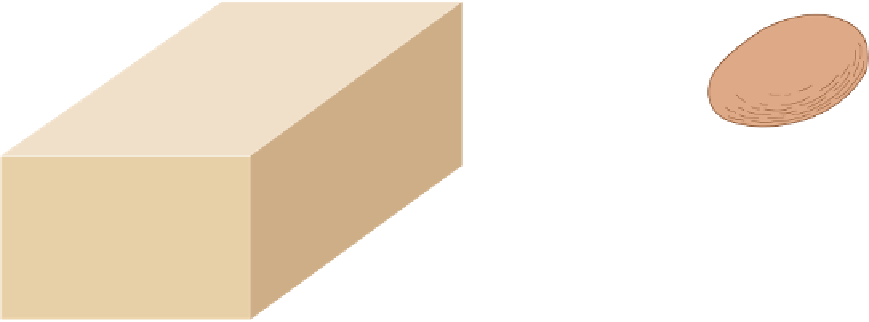
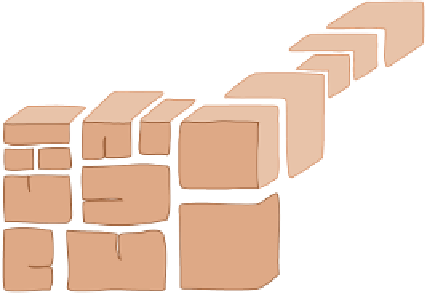



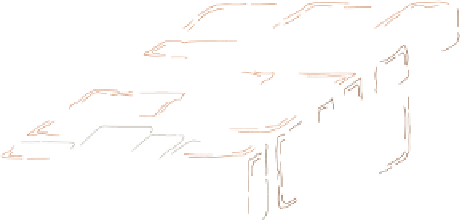
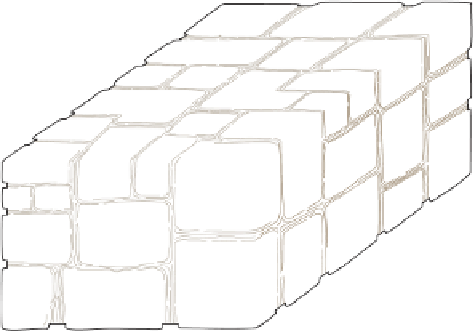






















































































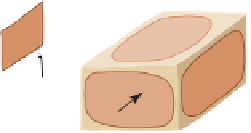





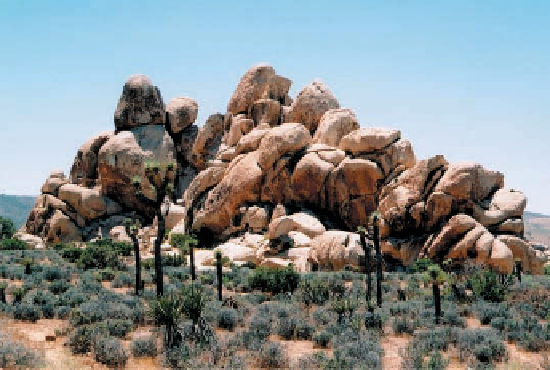
Search WWH ::

Custom Search